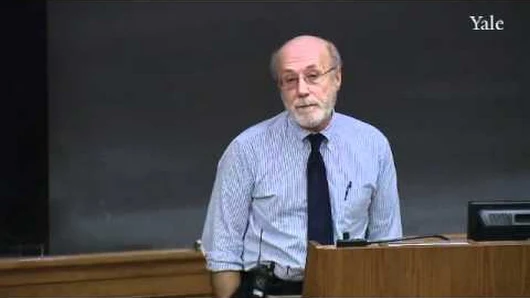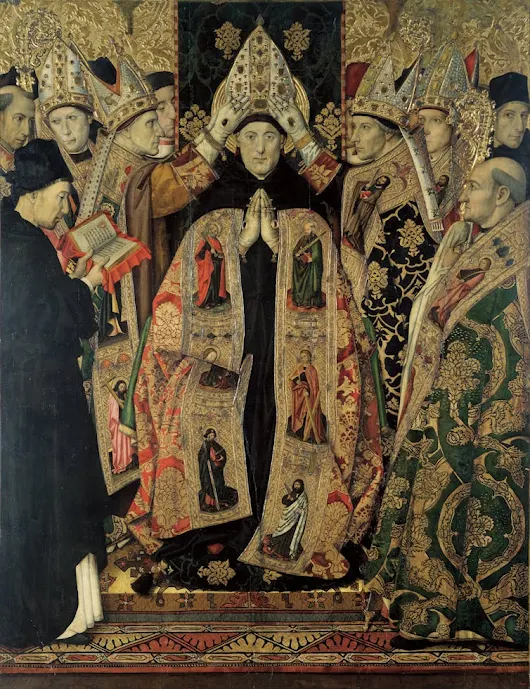Marriage banns and marital bans
The
original Catholic Canon law requiring marriage banns---intended to prevent clandestine marriages---was decreed in
Canon 51 of the Lateran IV Council in 1215; until then, the public announcement in church of marriages to be contracted was only made in some areas.
.......
Pope Alexander III (1159-1181) decided to follow the recommendations of scholars at the University of Paris and ruled that marriage was created simply when spouses both said they were married. No priest, no witnesses and no ceremonies were required. Alexander III’s decision marks the high water mark of easy access to marriage. This rule – that you contracted marriage by speaking the marriage vows – continued in England until Lord Hardwick’s marriage act in 1753.
To many clerics and lawyers this all felt a bit too easy, so it was felt that something was needed to safeguard marriages contracted by words alone. In attempt to do so the Fourth Lateran Council passed the rules in 1215 which required the reading of banns in church on three consecutive Sundays. In doing so, the council introduced a final principle: marriage was not just a matter between individuals but an institution that was protected by the community. The fact that you were legally able to marry – that you were marrying of your own free will, that you were not already married, that you were not too closely related, and that you were old enough to make the decision to marry – was guaranteed and testified to by every member of the local community.
The banns of marriage, commonly known simply as the "banns" or "bans" (from a Middle English word meaning "proclamation", rooted in Frankish and from there to Old French), are the public announcement in a Christian parish church or in the town council of an impending marriage between two specified persons. It is commonly associated with the Catholic Church and the Church of England and with other denominations whose traditions are similar; in 1983, the Roman Catholic Church removed the requirement for banns and left it to individual national bishops' conferences to decide whether to continue this practice, but in most Catholic countries the banns are still published.
The purpose of banns is to enable anyone to raise any canonical or civil legal impediment to the marriage, so as to prevent marriages that are invalid. Impediments vary between legal jurisdictions, but would normally include a pre-existing marriage that has been neither dissolved nor annulled, a vow of celibacy, lack of consent, or the couple's being related within the prohibited degrees of kinship.
https://theconversation.com/reading-of-the-banns-how-the-church-tried-to-perfect-the-institution-of-marriage-51411
https://en.wikipedia.org/wiki/Banns_of_marriage
Anglo Saxon Sex
Medieval sex is far more often discussed in penitentials – lists of sins (according to the Church) and the various penances that confessors should give the perpetrators for committing them:
Had sex with another man’s wife? Fast for one winter
Had a wet dream? Sing 23 psalms
Had sex with a pig? Fast for seven years
We have no way of knowing how this related to real life practice. Just because a sex act is mentioned doesn’t mean that anyone actually performed it. We don’t know how often Anglo-Saxons had sex with pigs (if at all), whether they bothered to confess it to a priest, or whether the priest actually gave them the penance he was supposed to assign.
And, in theory, if you obeyed the Church, even marital sex was off the table for most of the year:
Not during Lent, Easter, Pentecost and various other feast and fast days
Not while the wife is menstruating
Not while the wife is heavily pregnant or for 40 days after she gives birth
Not on Tuesday, Thursday, Saturday and Sunday nights
Not during daylight
And the type of sex you could have was also limited:
No oral or anal sex
No masturbation
No positions other than the “missionary” position
No sex unless your express intent is to produce children and you’re not enjoying it too much
It seems unlikely that ordinary people obeyed these prohibitions to the letter, particularly since historians such as Bede describe monks and nuns giving the Church a bad name through their drinking, gluttony, and fornication. No, religious documents don’t tell the whole story.
So perhaps we get a clearer picture from the literary descriptions. Does the “onion” riddle prove that Anglo-Saxon peasant women were enthusiastic and active sexual partners (note those verbs: grabs, rushes, holds, claims)? Or does it represent some monk’s sexual fantasy? The answers are not obvious here either.
The final tricky area is to do with sexual identity. In the 21st century, Westerners often like to divide people into straight and gay (even now we struggle to come to grips with categories such as bisexuality, asexuality, sexual fluidity). But the gay-straight opposition is only about 130 years old. Before that, people tend to talk more about what they do rather than what they are. In fact, if medieval people did think much about sexual identity, they may have been more inclined to do so in terms of categories such as virginity and chastity.
And that’s what’s really exciting about the Anglo-Saxon period. It’s not just the joys of good (or bad) sex in literature. Reading texts produced over 1000 years ago can make us think wider and deeper than the binaries and labels we fight over today. Asking questions about the past, it turns out, might help us re-envision the present.
https://theconversation.com/and-the-winner-of-the-medieval-bad-sex-in-fiction-award-is-51288
Over the centuries, countless women in the Christian West have been defined by appearance or attire and have been variously objectified by those in authority over them.
Among these countless women, there is a particular group called
“anchorites” (anchorites could be men, but were more frequently women). Anchorites, who were very common in England in the Middle Ages, were people who wanted to live lives of Christian prayer and extreme devotion to God. In order to do this, they allowed themselves to be permanently enclosed in small rooms (called “cells”) adjoining their local church and vowed themselves to a life of chastity and penance. Their enclosure began when they were literally bricked into their cells, and was meant to continue until the moment of their death. In fact, we have quite a few records of anchorites being buried within their own cells.








